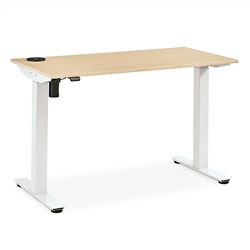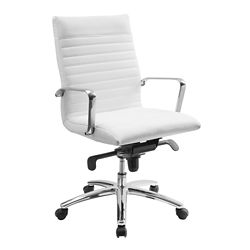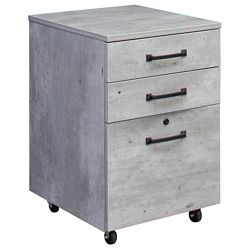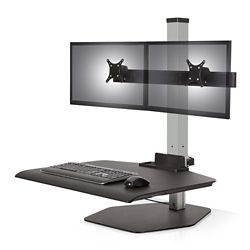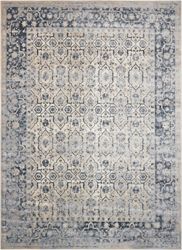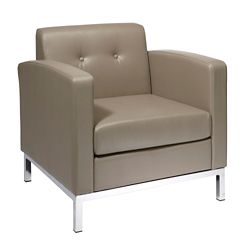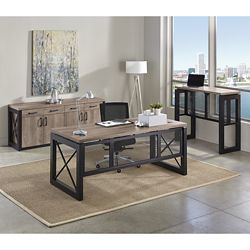- Home
- Office Furniture
- Welcome Office Furniture Customers
Welcome Office Furniture Customers
You can now find OfficeFurniture.com at NationalBusinessFurniture.com. We’ve always been a part of the same family. Now we’re living under one roof. Find everything you need for your office at National Business Furniture.
You can now find OfficeFurniture.com at NationalBusinessFurniture.com. We’ve always been a part of the same family. Now we’re living under one roof. Find everything you need for your office at National Business Furniture.
Shop Popular Home Office Categories
Shop Popular Home Office Categories
Helpful Articles
Helpful Articles
Office Olympics Ideas

Office Olympics Ideas
Laptop Desk Buying Guide
Are you in the market for a new laptop desk? If so, you're in the right place! We've compiled our top recommendations on the desk type that will work best for you based on the size of your office and the available space within it.
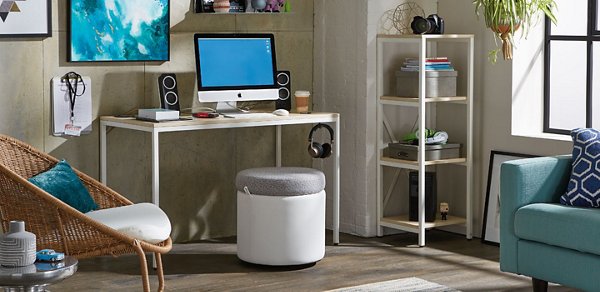
Laptop Desk Buying Guide
Are you in the market for a new laptop desk? If so, you're in the right place! We've compiled our top recommendations on the desk type that will work best for you based on the size of your office and the available space within it.
Types of File Cabinets

Types of File Cabinets
Have questions? Visit our FAQs
What is your 800 number/fax number?
OfficeFurniture.com maintains a toll free number for sales orders and customer service inquiries. Please call 800-933-0053 to contact a representative or fax us at 800-468-1526.
Back to Top
What are your phone hours?
OfficeFurniture.com is now available to take your sales and customer service calls Monday through Friday 6:30 am - 7 pm (Central) and Saturday 9 am - 3 pm (Central). You can also email us for product quotations, billing inquiries or for any other questions.
Back to Top
Who do I contact for customer service?
We strive to carry quality brands and deliver your new furniture in perfect condition. If you need service on furniture, we will do everything we can to help you. Often the manufacturer wants to be contacted directly. The manufacturer usually handles part replacements, etc. There will be a note in the literature that comes with your new furniture that will direct you on who to call in the event that service replacement is needed. If this information is not available, please call us at 800-933-0053 or email us for product quotations, billing inquiries, product inquiries or for any other issues.
Back to Top
Order Information
How is my personal information protected/What is your privacy policy?
OfficeFurniture.com is dedicated to protecting the privacy of our customers and follows industry standard best practices to do so. OfficeFurniture.com does NOT rent or sell email addresses or phone numbers. Click here to view our complete privacy policy.
Back to Top
How do I check the status of my order or track my order?
There are three ways to check your order status:
- Use our online Order Status tool
- Email us
- Call us at 800-933-0053
What are my Confirmation number and Order number?
Your Confirmation number is generated when you place your order online. It is included on the Checkout – Receipt page of our website and is included in the Confirmation email we immediately send to you. Your Order Number is included in the Acknowledgment email we send to you after we have processed your order.
Back to Top
Shipping/Delivery Information
How will my furniture be shipped?
Shipping methods vary depending upon the size of the item(s) being ordered. Product specific information is available on each product page. Please call us at 800-933-0053 with any shipping questions or special instructions.
UPS/FedEx deliveries:
UPS and FedEx deliveries will be brought inside your building. If you require additional services, please call 800-933-0053 and we can help!
Common carrier shipments:
Your order will be shipped with free tailgate delivery included, meaning the furniture will be delivered to your dock. If there is no delivery dock at your business or home office, you will be responsible for taking the furniture from the tailgate of the delivery truck.
For an additional charge, inside delivery services are available. These optional charges will be shown once you add products to your shopping cart. For orders of over $5000 requiring inside delivery, we strongly suggest you call to discuss your needs so we can apply all appropriate discounts.
Please note that for the following vendors, inside delivery is offered free of charge: Parker House, Aspen Home, and Hooker.
If you have special needs or questions, tell us in the shipping instructions/order comments area during checkout or call us at 800-933-0053 to discuss. If needed, we can arrange for the trucking company to call 24 hours prior to delivery so that you will know when to expect them.
Back to Top
When will my order ship?
Shipping times are indicated on the product page for each of the items on our website. Many products are labeled "Ships Today" and will be delivered within 2-5 days. The majority of the remaining products on our site will be delivered to you in 1-2 weeks.
Back to Top
After the Sale Information
What is your warranty/guarantee policy?
We proudly offer a 9 year guarantee that all products are accurately described and will give you the service you expect. If there are any problems with the quality of the materials or workmanship, we will adjust, repair or replace to your satisfaction.
Normal wear or chairs used 24 hours per day are excluded. Orders over $15,000 and products with electronic components are subject to manufacturer's warranty. The guarantee does not include color matching. If you have a question regarding colors, please request free color samples prior to placing your order.
Back to Top
What is the cancellation policy?
If we are able to cancel your order before it is produced and/or shipped, there is not a charge for the cancellation. If the product has been shipped, you will be responsible for all inbound and outbound shipping charges. These charges will be deducted from your refund. Cancellations or returns must be authorized in advance. Please call 800-933-0053 and a Customer Service representative will assess the situation and, if need be, issue a return authorization.
Back to Top
What is the return policy?
If an item needs to be returned at your request, round trip shipping costs and restocking fees will be charged (restocking fees vary depending on situation). Returns are only accepted within 30 days of receipt and ready to assemble products cannot be returned once they are assembled. The product must be in original packaging and re-sellable condition in order to be returned. Please call 800-933-0053 and a Customer Service Representative will assess your situation. Officefurniture.com will facilitate the return of the product through the correct carrier and provide any necessary paperwork. Once the merchandise is received, a refund will be issued in the same method payment was made. If you have any doubts about color matching, please request free color samples prior to placing your order.
Back to Top
What if something is wrong with the furniture (damaged/missing part)?
We strive to carry quality brands and deliver your new furniture in perfect condition. If something is wrong with your furniture, we will do everything we can to help you. Often the manufacturer wants to be contacted directly. The manufacturer usually handles part replacements. There will be a note in the literature that comes with your furniture that will direct you on who to call in the event that parts are needed. If this information is not available or if you have any questions, please call us at 800-933-0053 or email us.
We proudly offer a 9 year guarantee that all products are accurately described and will give you the service you expect. If there are any problems with the quality of the materials or workmanship, we will adjust, repair or replace to your satisfaction. Orders over $15,000 and products with electronic components are subject to manufacturer's warranty. The guarantee does not include color matching. If there is a question, please request free color samples prior to placing your order.
Company Information
What is your 800 number/fax number?
OfficeFurniture.com maintains a toll free number for sales orders and customer service inquiries. Please call 800-933-0053 to contact a representative or fax us at 800-468-1526.
Back to Top
What are your phone hours?
OfficeFurniture.com is now available to take your sales and customer service calls Monday through Friday 6:30 am - 7 pm (Central) and Saturday 9 am - 3 pm (Central). You can also email us for product quotations, billing inquiries or for any other questions.
Back to Top
Who do I contact for customer service?
We strive to carry quality brands and deliver your new furniture in perfect condition. If you need service on furniture, we will do everything we can to help you. Often the manufacturer wants to be contacted directly. The manufacturer usually handles part replacements, etc. There will be a note in the literature that comes with your new furniture that will direct you on who to call in the event that service replacement is needed. If this information is not available, please call us at 800-933-0053 or email us for product quotations, billing inquiries, product inquiries or for any other issues.
Back to Top
Order Information
How is my personal information protected/What is your privacy policy?
OfficeFurniture.com is dedicated to protecting the privacy of our customers and follows industry standard best practices to do so. OfficeFurniture.com does NOT rent or sell email addresses or phone numbers. Click here to view our complete privacy policy.
Back to Top
How do I check the status of my order or track my order?
There are three ways to check your order status:
- Use our online Order Status tool
- Email us
- Call us at 800-933-0053
What are my Confirmation number and Order number?
Your Confirmation number is generated when you place your order online. It is included on the Checkout – Receipt page of our website and is included in the Confirmation email we immediately send to you. Your Order Number is included in the Acknowledgment email we send to you after we have processed your order.
Back to Top
Shipping/Delivery Information
How will my furniture be shipped?
Shipping methods vary depending upon the size of the item(s) being ordered. Product specific information is available on each product page. Please call us at 800-933-0053 with any shipping questions or special instructions.
UPS/FedEx deliveries:
UPS and FedEx deliveries will be brought inside your building. If you require additional services, please call 800-933-0053 and we can help!
Common carrier shipments:
Your order will be shipped with free tailgate delivery included, meaning the furniture will be delivered to your dock. If there is no delivery dock at your business or home office, you will be responsible for taking the furniture from the tailgate of the delivery truck.
For an additional charge, inside delivery services are available. These optional charges will be shown once you add products to your shopping cart. For orders of over $5000 requiring inside delivery, we strongly suggest you call to discuss your needs so we can apply all appropriate discounts.
Please note that for the following vendors, inside delivery is offered free of charge: Parker House, Aspen Home, and Hooker.
If you have special needs or questions, tell us in the shipping instructions/order comments area during checkout or call us at 800-933-0053 to discuss. If needed, we can arrange for the trucking company to call 24 hours prior to delivery so that you will know when to expect them.
Back to Top
When will my order ship?
Shipping times are indicated on the product page for each of the items on our website. Many products are labeled "Ships Today" and will be delivered within 2-5 days. The majority of the remaining products on our site will be delivered to you in 1-2 weeks.
Back to Top
After the Sale Information
What is your warranty/guarantee policy?
We proudly offer a 9 year guarantee that all products are accurately described and will give you the service you expect. If there are any problems with the quality of the materials or workmanship, we will adjust, repair or replace to your satisfaction.
Normal wear or chairs used 24 hours per day are excluded. Orders over $15,000 and products with electronic components are subject to manufacturer's warranty. The guarantee does not include color matching. If you have a question regarding colors, please request free color samples prior to placing your order.
Back to Top
What is the cancellation policy?
If we are able to cancel your order before it is produced and/or shipped, there is not a charge for the cancellation. If the product has been shipped, you will be responsible for all inbound and outbound shipping charges. These charges will be deducted from your refund. Cancellations or returns must be authorized in advance. Please call 800-933-0053 and a Customer Service representative will assess the situation and, if need be, issue a return authorization.
Back to Top
What is the return policy?
If an item needs to be returned at your request, round trip shipping costs and restocking fees will be charged (restocking fees vary depending on situation). Returns are only accepted within 30 days of receipt and ready to assemble products cannot be returned once they are assembled. The product must be in original packaging and re-sellable condition in order to be returned. Please call 800-933-0053 and a Customer Service Representative will assess your situation. Officefurniture.com will facilitate the return of the product through the correct carrier and provide any necessary paperwork. Once the merchandise is received, a refund will be issued in the same method payment was made. If you have any doubts about color matching, please request free color samples prior to placing your order.
Back to Top
What if something is wrong with the furniture (damaged/missing part)?
We strive to carry quality brands and deliver your new furniture in perfect condition. If something is wrong with your furniture, we will do everything we can to help you. Often the manufacturer wants to be contacted directly. The manufacturer usually handles part replacements. There will be a note in the literature that comes with your furniture that will direct you on who to call in the event that parts are needed. If this information is not available or if you have any questions, please call us at 800-933-0053 or email us.
We proudly offer a 9 year guarantee that all products are accurately described and will give you the service you expect. If there are any problems with the quality of the materials or workmanship, we will adjust, repair or replace to your satisfaction. Orders over $15,000 and products with electronic components are subject to manufacturer's warranty. The guarantee does not include color matching. If there is a question, please request free color samples prior to placing your order.

